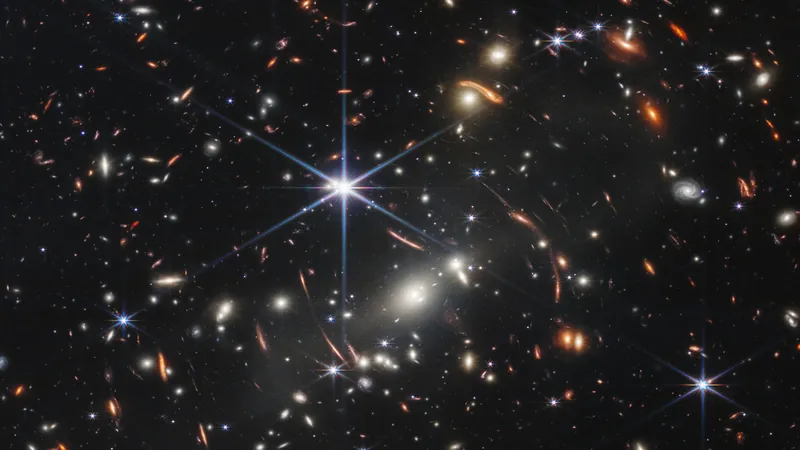
Unlocking the Cosmic Mystery: Why Dwarf Galaxies Line Up!
2025-05-20
Author: John Tan
A Galactic Puzzle Revealed
Could structures known as "zippers" and "twisters" be the key to understanding the curious alignment of dwarf galaxies? A recent study hints that these formations from the early universe could shed light on this galactic phenomenon and the enigmatic workings of dark matter.
The Dwarfs in Our Cosmic Neighborhood
Every massive galaxy, including our beloved Milky Way, harbors a collection of smaller dwarf galaxies in orbit. Among them are the fascinating Large and Small Magellanic Clouds. Astronomers have long been puzzled by the observation that these dwarfs don't seem to drift randomly; instead, they often align in a flat plane. For instance, the 11 brightest satellites of the Milky Way and numerous companions around the Andromeda galaxy form what scientists refer to as the Great Plane of Andromeda.
Cracking the Cosmic Code with Simulations
Faced with this phenomenon, astronomers turned to the powerful tool of computer simulations to decipher the cosmos. Since we can only perceive a sliver of the universe's mass—mainly the light-emitting matter—dark matter's role remains elusive. This invisible mass dominates every galaxy, yet its interactions with visible matter are poorly understood.
The Turning Point: New Research Findings
A team led by Janvi Madhani from Johns Hopkins University recently published groundbreaking research in The Astrophysical Journal, diving into advanced simulations of 12 Milky Way-like galaxies. These simulations tracked the movement of dark matter and gas over billions of years, challenging previous assumptions that dwarf galaxies simply scattered into randomness after formation.
The Cosmic Connection: Filaments as Galactic Highways
Instead of dispersing, scientists discovered that gas filaments—the essential building blocks feeding galaxies—can intertwine. When these filaments enhance each other, they confine dwarf galaxies to a single orientation or plane. Two critical interactions were identified: - **Zippers**: This occurs when filaments merge seamlessly, akin to a highway zipper merge, resulting in a cohesive gas plane. - **Twisters**: In contrast, this form manifests when a new filament with considerable angular momentum collides with an existing one, altering the plane's position but maintaining its structure.
A Balancing Act for Galactic Formation
Complications arise when excessive filaments converge on the same galaxy—too many interconnections can obliterate the structured alignment, sending dwarf galaxies into chaotic orbits. The research suggests that we might find organized planes of dwarf galaxies in about half to potentially 70% of galaxies similar to the Milky Way and Andromeda.
Conclusion: A Milestone in Cosmology
This research marks a significant step forward in our understanding of dark matter and galaxy formation, demonstrating that there isn’t an inconsistency between expected behaviors and observations. Far from challenging our cosmological models, it resolves a longstanding mystery, offering new insight into the sprawling architecture of the universe.


 Brasil (PT)
Brasil (PT)
 Canada (EN)
Canada (EN)
 Chile (ES)
Chile (ES)
 Česko (CS)
Česko (CS)
 대한민국 (KO)
대한민국 (KO)
 España (ES)
España (ES)
 France (FR)
France (FR)
 Hong Kong (EN)
Hong Kong (EN)
 Italia (IT)
Italia (IT)
 日本 (JA)
日本 (JA)
 Magyarország (HU)
Magyarország (HU)
 Norge (NO)
Norge (NO)
 Polska (PL)
Polska (PL)
 Schweiz (DE)
Schweiz (DE)
 Singapore (EN)
Singapore (EN)
 Sverige (SV)
Sverige (SV)
 Suomi (FI)
Suomi (FI)
 Türkiye (TR)
Türkiye (TR)
 الإمارات العربية المتحدة (AR)
الإمارات العربية المتحدة (AR)